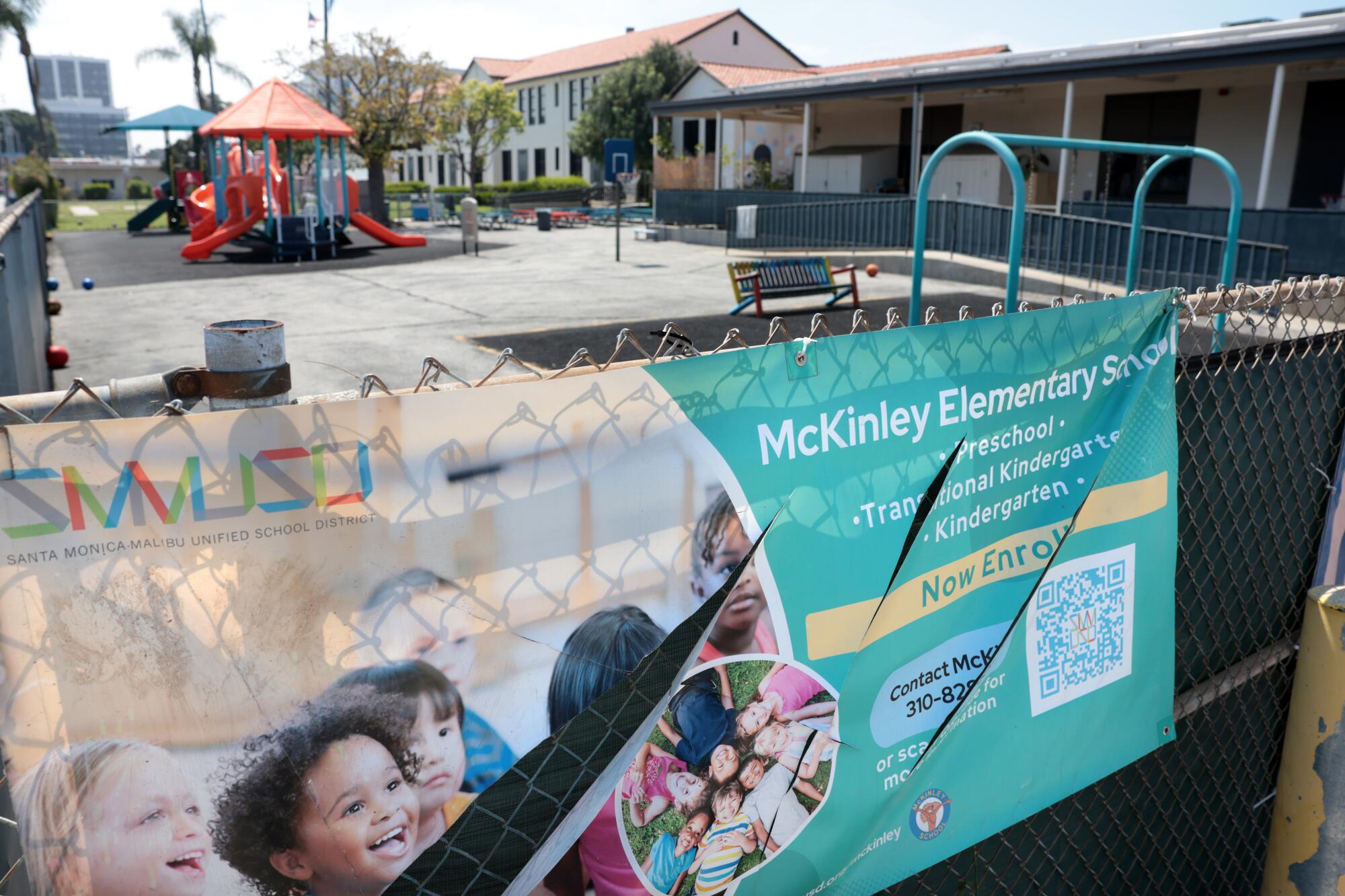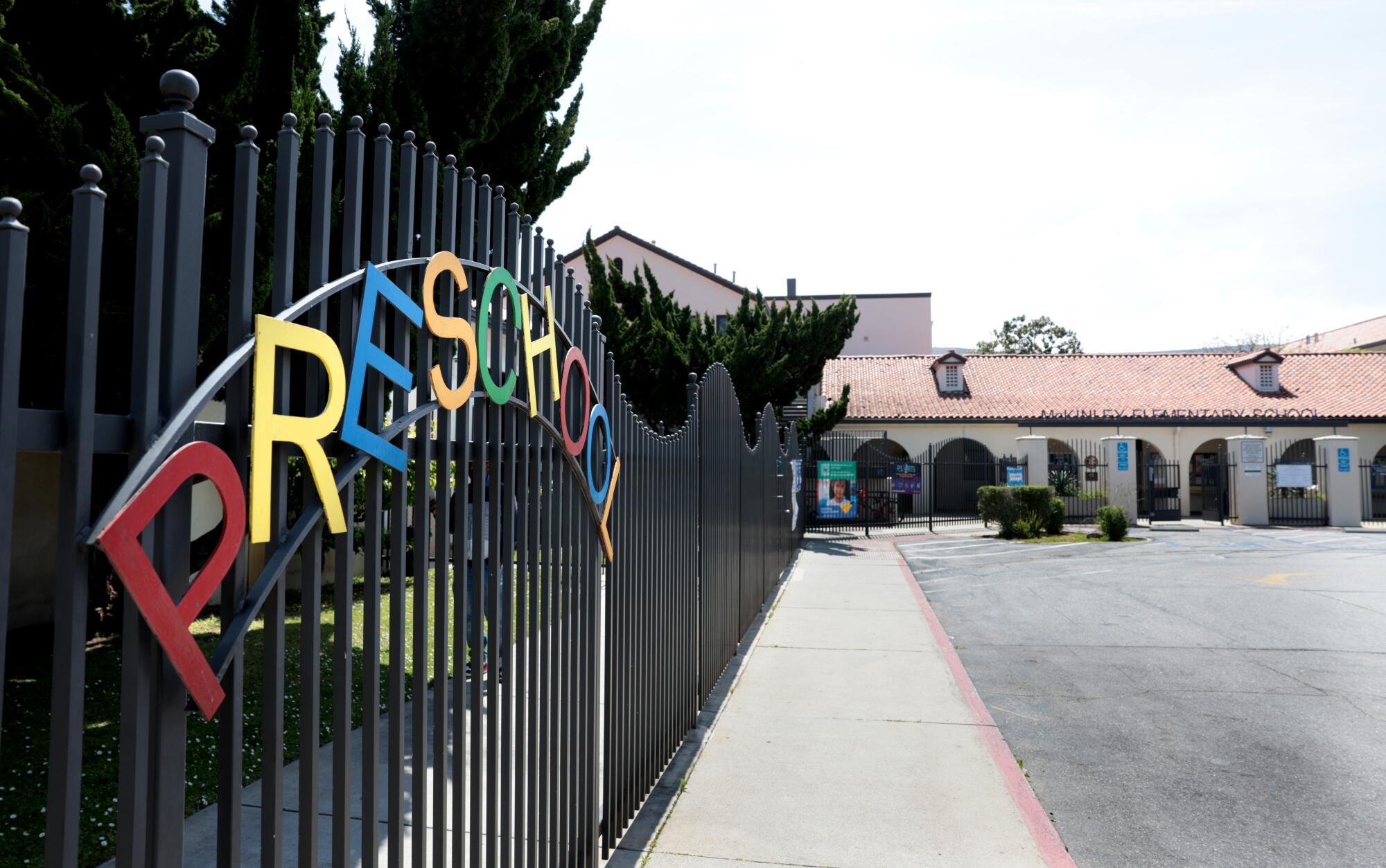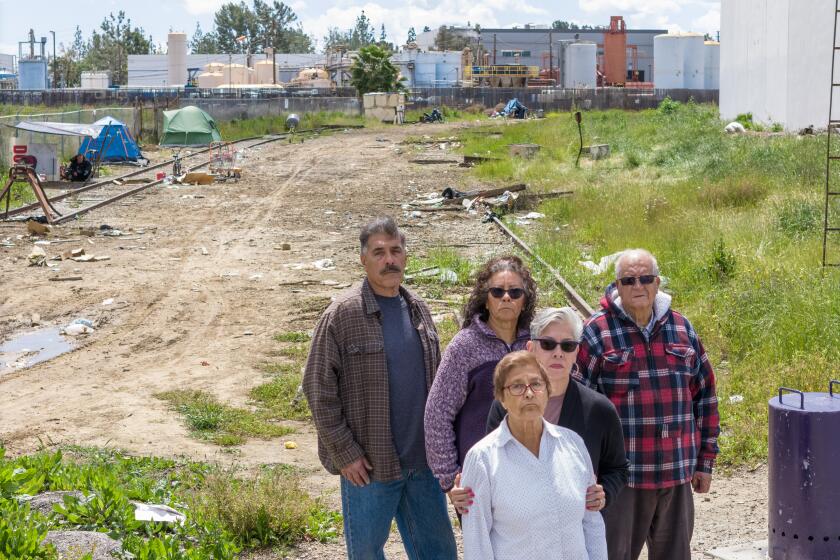
For years, school district officials had grand designs to revamp the campus of McKinley Elementary in Santa Monica.
The Santa Monica-Malibu Unified School District intended to build a two-story building with eight state-of-the-art classrooms and a modernized front office. The project had already been funded by a previous bond measure and splashy renderings were publicized by district staff.
Last year, however, a district-hired inspector discovered dangerous levels of toxic vapors percolating in the soil at the proposed construction site, a parking lot on the northeast end of campus. Since then, state regulators have concluded the contaminants likely migrated underground from a dry cleaner across the street.
Although these hazardous fumes were not detected above state health limits inside school buildings, regulators determined the contamination could pose a risk to public health if the ground were disturbed or new construction was sited on top.
Aggressive and impactful reporting on climate change, the environment, health and science.
The pollution has complicated the district’s renovation plans, which will require new safety measures and soil remediation. Meanwhile, the state has reached out to TJ Cleaners to clean up its property to prevent contamination from continuing to spread.
But the site is one of more than 8,600 active and former dry cleaning facilities across California, an industry that leaves contamination at 75% of its sites, according to the state Department of Toxic Substances Control. The most notable contaminant, perchloroethylene (PCE), is a cleaning solvent that has been linked to several types of cancer.
California banned the use of PCE at dry cleaners in 2023, after decades of use as a dirt- and stain-removing agent. But historically, it was common practice to dump these chemicals in the rear of the business or flush them down the toilet, according to state officials.
Decades of improper disposal and leaky storage tanks have caused plumes of PCE and other contaminants to seep into groundwater and soil, where they can migrate considerable distances and reemerge as harmful vapor.
“You can see where people just took buckets full and tossed them out,” said Jane Williams, executive director of California Communities Against Toxics. “So there was basically — what would be considered now — all kinds of illegal disposal. Almost every historic dry cleaner can have some type of contamination.”
Environmental regulators have found explosive levels of methane in a popular Berkeley park. Regulators and the city are sparring over the source of the gas and what to do about it.
In 2021, state lawmakers dedicated $152.5 million for the Department of Toxic Substances Control to investigate dry-cleaning facilities and search for these underground plumes of contamination. So far, the state has honed in on more than 100 dry cleaners statewide, including more than 70 in Los Angeles County.
More than two years later, the findings and enforcement arising from the state program remain unclear. The state toxics department did not respond to several requests for comment.
But environmental advocates say the state’s testing and cleanup protocols are insufficient. State regulators, they argue, rarely agree to test the properties surrounding contaminated dry-cleaning facilities to determine the risk to nearby homes, schools and businesses.
In Los Angeles’ Lincoln Heights neighborhood, residents have long expressed concern about the former site of Welch’s Uniform Facility, which was once advertised as America’s largest industrial dry cleaners. Although the site closed in 1988 and some remediation has occurred, the PCE levels there remain so high that the state and owner recently signed an agreement that it would not be redeveloped for housing, a daycare or a hospital.
Given the extent of the pollution, community members have been petitioning the state for years to test neighboring properties, including Hillside Elementary and a former industrial site that is being redeveloped into apartments. The proposed apartment complex — a former toxic waste dump — also contained elevated levels of PCE.
“This contamination from the dry cleaning fluids is potentially much deeper, long-term and pervasive than what this investigation will establish,” said Michael Hayden, president of the Lincoln Heights Community Coalition.

In Santa Monica, the soil contamination at McKinley Elementary was discovered during state-mandated environmental testing, which precedes construction that requires excavating soil.
The highest measurement of PCE in soil was around 2,600 parts per cubic meter, more than 10 times higher than the state limit. Other toxic chemicals including benzene and trichloroethylene also exceeded state health standards in the soil.
The contamination, state officials say, likely originated at TJ Cleaners, a dry cleaners that has operated since 1991.
The state has called on TJ Cleaners to clean up its property with state oversight. TJ Cleaners owner Albert Masangcay said he wasn’t aware of contamination and that his lawyers are reviewing a letter from the toxic substances agency. He added that dry cleaning is done off site.
It remains unclear if the state will call for soil or groundwater testing in homes and businesses surrounding the site.
Santa Monica-Malibu Unified spokesperson Gail Pinsker said the school district still intends to construct the new building, starting this summer. It plans to install an underground barrier to prevent fumes from entering the building. It will also install vapor extraction equipment to remove the presence of chemicals on site.
These measures may push the school district over its initial construction budget, according to district officials.
“We have worked cooperatively with DTSC on this project and look forward to continue construction as quickly as possible so we may maintain our interest in opening this new classroom and administration building,” Pinsker said in an email. “We appreciate the community support on bond measures that provide for school modernization projects and note that delays in construction may require additional funds beyond the budget estimate to complete this project.”
Yet, perhaps the greater question is: How long it will take to fully rid the school grounds of this contamination?
“It could be short and sweet, like six months,” said Williams. “Or it could be years.”
Environmental and community groups want the state to turn down Phibro-Tech for a renewed permit for its Santa Fe Springs facility.










